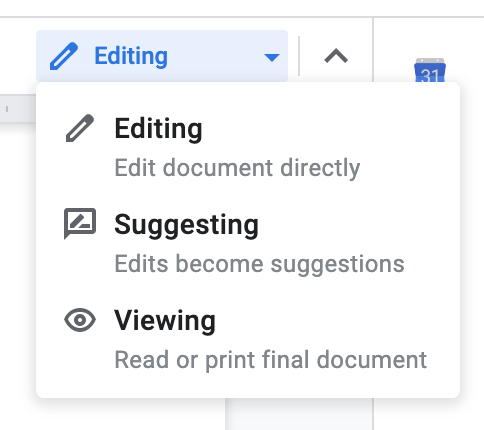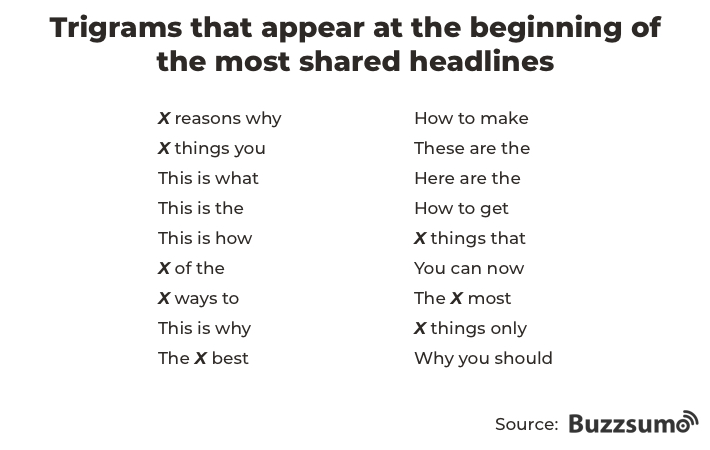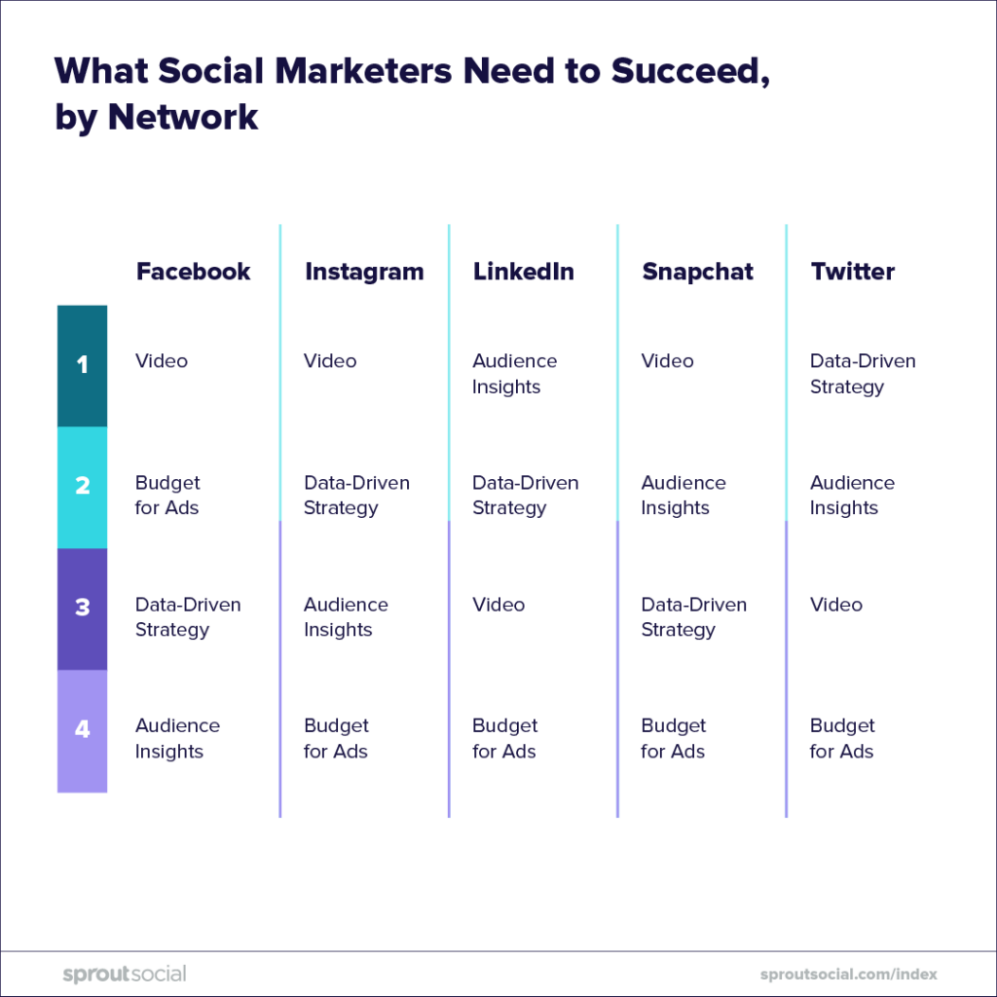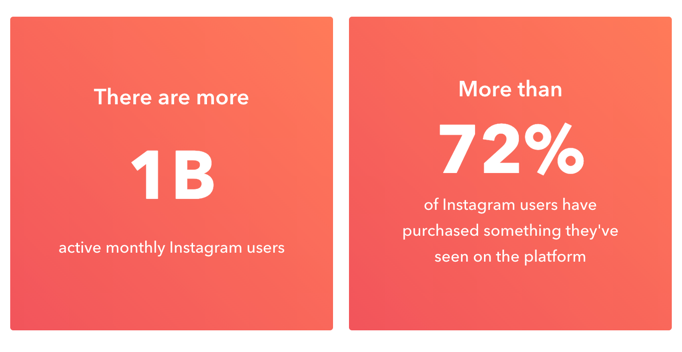For small businesses to bring their brands to the next level, content marketing is a must. Remember that content marketing gets three times more leads than paid search advertising and yet costs 62% less than traditional marketing.
However, according to 44% of marketers, content production is also one of the most challenging parts of handling a business, especially a small one. Content marketing takes time, effort, and resources—things that most small businesses don’t have the luxury of having yet, compared to more established companies.
And yet, if you’re a small business owner, you cannot afford to ignore content marketing, either. The solution is to be more discerning and strategic about what methods you implement for your business. Below we list 23 quick and easy tips to hack your content marketing and growth strategies.
Why quick hacks? Because we understand how pressed for time small business owners can be. These hacks are actionable and can be implemented easily, so you can spend more time improving your products, services, and other parts of your business.
This article is divided into four key categories, spanning content marketing, website improvements, social media strategies, and paid advertising.
The benefits and effectiveness of content marketing are given. The question is: what are the best methods or strategies that you can leverage to boost your content marketing ROI? Here are six quick hacks you can implement:
Outsource content writing to freelancers
Content has always been king, and it looks like it’ll reign for much longer. Marketers continue to shift towards longer, more in-depth content. Long-form blog posts, in general, can generate nine times more leads than short-form posts. The sticky part? It takes craft and time to actually sit down and write an article, especially a long-form one.
To hack this, try outsourcing your content writing to freelancers. Partnering with freelance writers gives you the benefit of getting their experience and expertise on an as-needed basis. A key thing to remember is that you should focus on hiring the right, qualified writer—not the cheapest one.
Do keyword research with free tools
Knowing which keywords to optimise for can make or break your website’s ranking and significantly affect your page’s findability for your target market.
Keywordtool.io and Ubersuggest are two great free keyword research tools you can use to get an initial list of popular search queries, related keywords, and even questions you can answer to draw potential customers to your site. Using keywords appropriately will help you rank well in search engines and generate more content ideas for your blog.
Power up your Google Docs with keyboard shortcuts and add-ons

Whether you’re working with a remote team, in-house creators, freelancers, or just want the ability to edit or create pieces of content on the go, Google Docs is the powerful (and free) tool that can help make content marketing easier.
Features like the ability to track changes, edits, make suggestions, leave comments, and assign action items are extremely useful in making the editing process more efficient.
Google Docs also gives you the ability to install add-ons so you can save even more time. Two of the most useful ones are:
- Grammarly, which helps you create content free from grammar and spelling errors, and
- Wordable, a powerful tool that enables you to export content from Google Docs straight to WordPress. That means no more time wasted on copy-pasting!
Create an editorial or content calendar
One of the great struggles of content marketers is coming up with topic ideas regularly. If you’ve ever found yourself scrambling to come up with a new topic every week as your deadlines loom in the horizon, creating and setting up an editorial calendar for your blog posts and even social media posts can help eliminate this problem.
CoSchedule is a great tool you can use for content planning, and also offers free editorial calendar templates to get you started. For a free version, you can always use a spreadsheet or Google Sheets to build out your editorial plan. Here are sample templates to get you started.
Optimise your headlines
If we’re talking about small changes with big impact, then optimising your headlines is a great place to start. Your content might be excellent, but if your headlines are lacklustre or not optimised with the right keywords, it might not get the amount of click-through it deserves.

So, what makes a good headline? According to Orbit Media, doing these things can help your headlines stand out from the competition:
- Use specific numbers and data
- Capture the readers’ interest by asking a question
- Use trigrams to boost social engagement
Update and republish your older, popular blog posts
Another great hack that’s cost and time-efficient and yet impactful is updating your older, popular blog posts. Updating articles that are still valid and relevant with a fresh spin or up-to-date information can go a long way in giving value to your customers and boosting your ranking without having to create a new post from scratch.
As a bonus, you also get more mileage from older posts that are already ranking well and bringing in traffic. Some ways to repurpose or republish older articles include:
- Rewriting or refreshing an article’s headlines
- Doing fresh keyword research and optimising for better or newer user intent
- Check for more recent trends or developments and make sure statistics or data are relevant and up-to-date
Learn the correct way to do email marketing
When it comes to content marketing, mainly email marketing, personalisation is the way to go. Build the habit of creating segments and emails that are relevant to these specific groups, versus blasting out a generic email. Segments can be based on location, interests, or where in the marketing funnel a customer is.
II. Website Hacks
Now that you’ve got your content down, you need to make sure that the site housing it is just as attractive and easily accessible to your current and potential customers. In this section, we’ll talk about quick and simple but essential ways to look after your site.
Gain insights to your site speed with Google Lighthouse
You may have painstakingly created a beautiful website full of quality content, but if the page speed lags, no one’s going to have the patience to see it. Want proof? According to Kissmetrics, 40% of people abandon websites that take more than 3 seconds to load.
Google Lighthouse is a free yet powerful tool that you can use to check under the hood and find out what improvements you can make to your site. Just key in your URL, run the tool, and it’ll show reports on your site’s speed performance and even other factors like accessibility, best practices, and SEO.
Use an image compressor like Squoosh or Tinypng
Compressing images may feel like an extra step or chore, but building this habit will save you a lot of headaches later on, especially when you find yourself with a slow, laggy website. Plus, free tools like Squoosh or Tinypng are pretty easy to use. Just drag and drop your images into the app then download the new compressed photos.
Add the Yoast plugin to your WordPress
Whenever you publish any new content, make sure your page is search engine optimised with the help of this WordPress SEO plugin from Yoast. Even its free version has pretty powerful features that can help you make sure you’re practising good SEO for your pages.
The plugin works by essentially giving you a checklist of on-page SEO best practices such as optimised keywords, and the right length for meta title or meta description, slug, and the content itself.
Use Google Analytics to measure your wins and opportunities
Yet another free but powerful tool is Google Analytics—and setting it up isn’t as hard as you might think! Here’s an easy tutorial on how to set up Google Analytics for your site.
Google Analytics gives you a powerful tool to measure your website’s performance and success. With this, you can figure out:
- How many people are visiting your website
- Which pages are attracting the most or least traffic
- How many visitors you have converted into leads or customers
- Where your visitors are coming from
- Which content is your audience engaging with the most
- Which pages are visitors bouncing out from
- Which geolocations are you attracting to your site
Being able to track and measure all these things and more will go a long way to figuring out what campaigns or content have given you the most success and which ones need more improvement or tweaking.
Add trust signals to your site
Displaying trust signals on your website can go a long way to converting an unsure customer into a lead or even a paying customer. With this extra layer of security, customers will feel more at ease in their decision to avail of your services or purchase a product. Some of the different types of trust signals you can use on your website include:
- social proof (such as customer reviews or plain social media shout-outs)
- association with other trusted brands (media mentions or a list of your clients)
- memberships to professional organisations
Check and double-check your meta title and descriptions
If you want to improve your click-through rates, then it would be worth taking a few minutes to go over your pages’ metadata—not only to make sure that each page has one, but also to ensure they’re optimised with the right keyword and written to be enticing enough to be clicked.
III. Social Media
As of 2019, there 3.484 billion social media users in the world (and counting). But with so many opportunities, the challenge is how to grab attention and not drown in the amount of posting, commenting, and replying you’ll need to do. Check out these tips to help you navigate your way around this challenge:
Be strategic about which platform to be active on
You may feel compelled to be on every social network to reach as many potential customers as you can. However, this will be a virtually impossible feat for anyone, especially a small business owner. Better to be strategic about which social networks you should focus your efforts on to get the most ROI.
Take into consideration what kind of company or brand you have, plus what sort of content you produce the most. For example, visual-heavy brands tend to do very well on Instagram and Facebook vs Twitter.

Source: Sprout Social
Focus on sharing visuals and videos
Visuals still reign supreme as the top type of content that people engage with and share the most. Where you can, focus on creating compelling images, charts, illustrations, graphs, gifs, and even videos to share with your audience.
Pro tip: having the word “video” on your title increases open rates by 19% and click-through rates by 200-300%.
Use a social media scheduler
Planning and scheduling your social media posts for the week can save you so much time from having to scramble every day to figure out what to post. Services like Sprout, Feedly, and CoSchedule can help you set up your schedule and plan your content.
If you take one day during the week to schedule and curate your content for the next seven days, you’ll only need to spend a few minutes checking in to answer comments, questions, or otherwise interact and engage with your customers.
Facebook’s platform is the most flexible when it comes to the kind of content you can share: images, text, links, videos. The critical thing is to post what is useful to your followers. Spamming their feed with useless information is the fastest way to lose fans.
Some good post ideas include links to your blog posts, links to interesting and useful articles related to your business or industry, new product announcements, and promotions.

Source: HubSpot
First thing you’ll need to do is to switch to an Instagram business account if you haven’t yet. Just go to Settings > Account > Switch to Professional Account. This will give you access to Instagram’s Business Tools with more features to help engage with your followers, promote your content, and get in-depth insights.
In terms of content, you should take advantage of Instagram’s Stories app to repost content from interesting sources or even from your own followers!
Use Twitter to direct traffic to your website by including your URL on your profile, plus featuring links to your landing pages or blog articles in your Tweets.
Take advantage of Twitter’s easy retweet feature by retweeting any mentions or links to your website that followers might have shared. Engage with your customers by liking, replying, and retweeting their own content, especially ones relevant to your business.
IV. Paid Ads
Make sure to complement your organic efforts with paid ads. With the right paid ad strategy, you can generate more leads, persuade people to convert, and increase brand awareness. Here are a few quick and easy tips to hack online advertising:
Analyse your competitors’ ad strategy
Thanks to some convenient (and free) online tools, you can check and analyse your competitors’ ad strategy. If you’re noticing a competitor whose Google Ads seem to be ranking highly, check out what kind of keywords they’re ranking for by using Spyfu.
Simply type in a competitor’s URL, and SpyFu will give you a list of which keywords are bringing them the most traffic—keywords you can use to inform your own campaign.
Run Facebook Messenger ads
Facebook Messenger ads are a new way of reaching your customers. Users will see them on the Messenger homepage and instead of having a “Shop Now” call to action, they’ll instead see “Send Message.” This way, your ad will entice customers to engage with your brand before asking them to buy anything—reducing the risk of turning off “cold” leads.
Another type of Messenger ad allows you to deliver bespoke messages directly to a user’s inbox. Again, the emphasis here is to drive engagement and interaction between you and your potential customers.
Choose the correct Instagram ad format for your goal
Depending on your objective, you’ll need to figure out which type of Instagram ad fits best for the need you’re answering with your ad.
For example, are you trying to raise brand awareness? Then a Stories ad, photo, or video ad can help you showcase what your brand is all about. If you’re highlighting a product or several, then Collection and Carousel ads are your best bets.
Measure everything!
Your campaigns are only as good as the lesson you learn from them. So, learn to place clear objectives and metrics on every ad you create! Thankfully, most of the major online ad platforms like Facebook and Google have made measuring paid performance easy. For Facebook, just head over to Ads Manager; for Google, go to Google Ads.
Final Word
While these hacks may be quick and simple, they nonetheless bring a noticeable impact on your content marketing performance. When it comes to building up your small business, you need to be smart on how to allocate your time and resources.
However, you can’t rely on these hacks all the time. While they do bring positive effects, they can be quite limited. Partnering with a full-service marketing agency SEO.uk can give you the expert advice you need to launch your brand to the next level.

